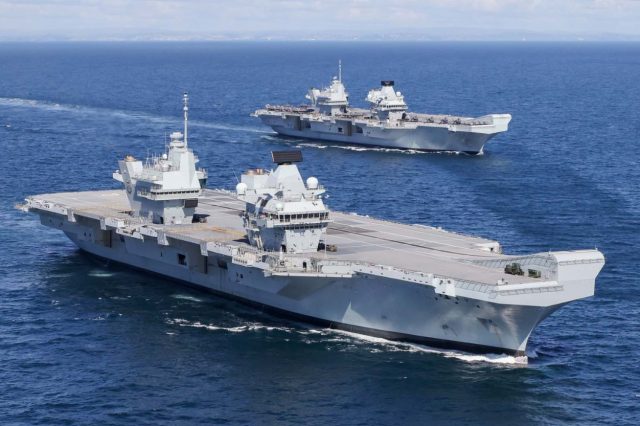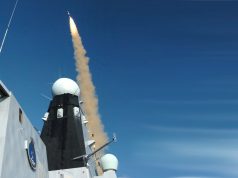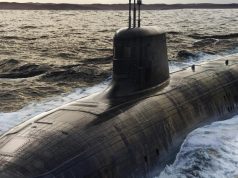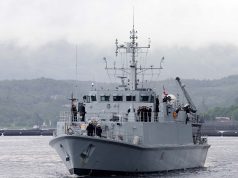Twelve years after the Royal Navy started work on building the next generation of aircraft carriers, the service achieved the symbolic milestone of having HMS Queen Elizabeth and HMS Prince of Wales sail together off the coast of Scotland.
The lead ship in the class, HMS Queen Elizabeth, had just completed a major exercise before starting its first operational deployment while HMS Prince of Wales was underway for trials when the ships got an opportunity to sail together.
HMS Queen Elizabeth exercised with twenty warships, three submarines and 150 aircraft during exercise Strike Warrior, the largest and most demanding assessment the UK carrier strike group has faced so far.
Ships, personnel and aircraft from 10 nations took part in the exercise off the coast of north-west Scotland, which saw them deploy a range of advanced threats against the group.
“The UK carrier strike group is a great symbol of collaboration, both across the Armed Forces and our industry partners. Sailing together through a number of different environments, the partnership will uphold British values and international order,” UK defense secretary Ben Wallace said.
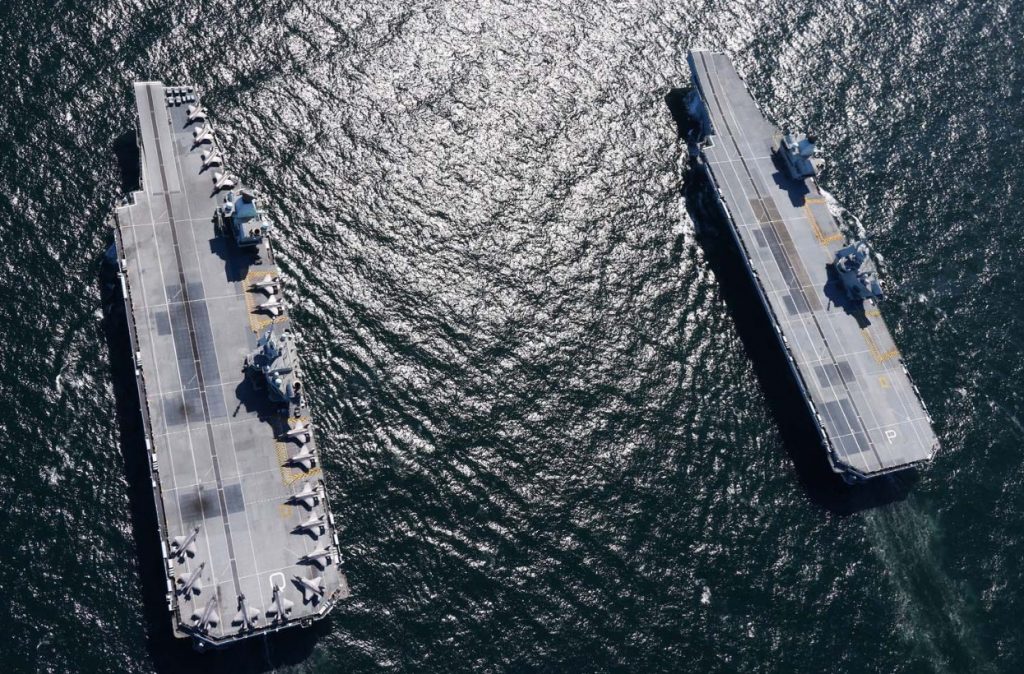
Strike Warrior saw the CSG pitted against warships from NATO’s Standing Maritime Group 1 to prove it can undertake high-intensity operations in response to a broad range of crisis and conflict situations. Activities included live missile firings at sea, training with NATO, mine counter measures operations and submarine exercises.
Demonstrating the ability of the strike group to operate alongside NATO allies, Strike Warrior featured forces from Denmark, France, Germany, Latvia, the Netherlands, Norway, Poland, the USA and one non-NATO country, Australia.
The two-week exercise formed part of the wider military bi-annual exercise, Joint Warrior, where the Royal Navy, Royal Air Force, British Army and UK Strategic Command – alongside NATO and Australian partners – conducted land, cyber and space exercises.
This was the final test of the CSG before it sets sail on a maiden operational deployment this weekend that will see it undertake engagements and exercises with more than one fifth of the world’s nations.
Led by HMS Queen Elizabeth, the task group will interact with 40 nations across the Mediterranean, Indian Ocean and Indo Pacific including India, Japan, the Republic of Korea and Singapore.
A highlight of the exercise included the first missile firings from a British jet at sea for 15 years, conducted by the F-35 stealth fighters.
In the tests off the west coast of Scotland, the F-35s launched from Queen Elizabeth’s flight deck to intercept a Mirach target drone.
By successfully bringing down two “bogeys” – jet target drones – with air-to-air missiles, the pilots of 617 Squadron (aka The Dambusters) showed how they can protect HMS Queen Elizabeth from air attack during the deployment and demonstrated the potency of the fifth-generation strike fighter.
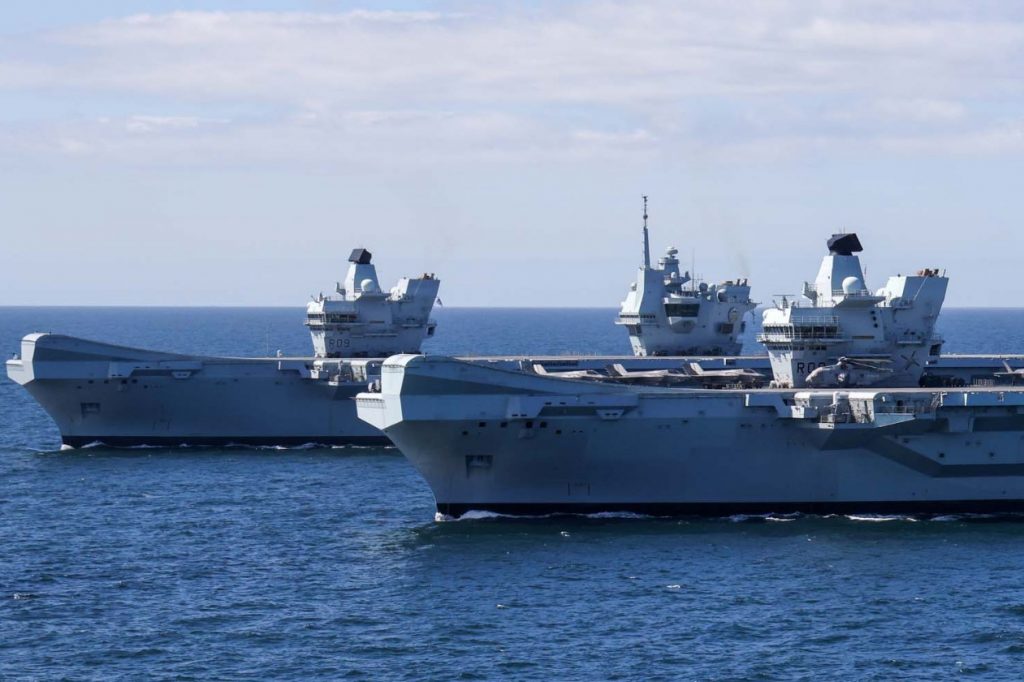
Captain James Blackmore, commander of the Carrier Air Group, said: “The first successful ASRAAM firing is an important moment for the F-35B, and for Carrier Strike.
“This was the first time a British jet has fired a missile at sea since before the retirement of the Sea Harrier in 2006.
“These firings proved our confidence in the weapon system and demonstrate the growing potency of this fifth-generation strike fighter.”
Elsewhere, Type 23 frigates HMS Kent and HMS Richmond conducted a stores transfer and other exercises with Royal Navy and allied submarines.
Proving the ability of the strike group’s differing units to work together seamlessly, HMS Kent and her Wildcat helicopter from Yeovilton-based 815 Naval Air Squadron transferred vital stores to the surfaced Astute class submarine.
Lieutenant Lee Colthart, 206 Flight Commander for Shepherd, Kent’s embarked Wildcat, said: “This is just one example of the utility of a Wildcat in the Carrier Strike Group.
“Wildcat crews train for a variety of tasks in order to protect and sustain the task group.”
He added: “Our task was to deliver stores around the task group including the attached submarine, to prove interoperability and capability between air, surface and sub-surface units.
“Tomorrow’s task could be anything from searching for enemy units to delivering rotary wing strike with our martlet missile system.’
HMS Richmond acted as both hunter and hunted in her interaction with the Astute-class submarine, putting into practise her anti-submarine warfare capabilities.
Following the conclusion of Exercise Strike Warrior, the UK’s two new Elizabeth-class aircraft carriers HMS Queen Elizabeth and HMS Prince of Wales rendezvoused at sea for the first time as the former returned to Portsmouth.
Commodore Steve Moorhouse, commander UK Carrier Strike Group said: “Having previously commanded both HMS Queen Elizabeth and HMS Prince of Wales, it was hugely exciting to be present as the two met at sea for the first time. I know that sense of pride and accomplishment is shared by thousands of others, military and civilian, who have contributed to the Royal Navy’s carrier renaissance over the past decade or more.
“The strategic significance is profound. Building one aircraft carrier is a sign of national ambition. But building two – and operating them simultaneously – is a sign of serious national intent. It means Britain has a continuous carrier strike capability, with one vessel always ready to respond to global events at short notice. Few other navies can do that. Britain is back in the front rank of maritime powers.”

















